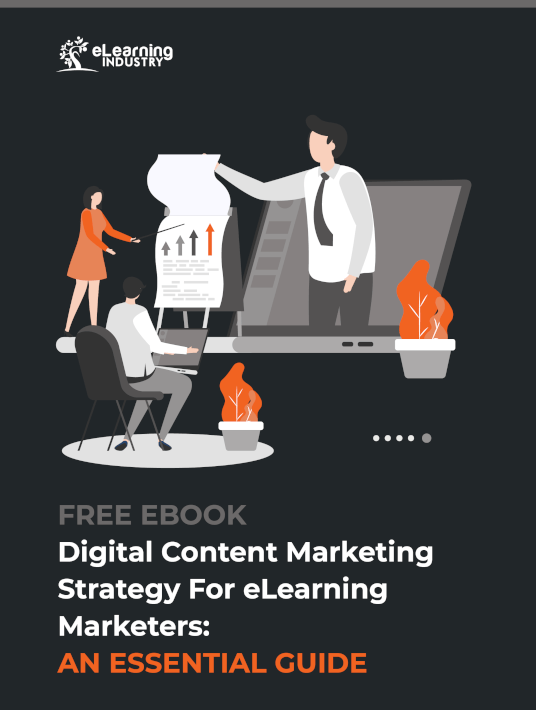Content Marketing Strategy Tips To Rank Your Content And Drive Qualified Traffic
Developing a strong content marketing strategy is key for any organization. Numbers aren’t everything, but there’s something to be said for ranking at the top of any list. Particularly when it comes to search engines or “best 20 vendor lists” in trade publications.

According to a study by Search Engine Watch, websites on the first page of Google results receive 92 percent of traffic from the average search [1]. Creating high-quality content to increase your organic search results is a meaningful way to get noticed by readers and search engines alike, mainly because organic traffic drops off beyond the first page of search results.
Search Engine Optimization and impactful content marketing are kindred spirits. When you break them down, both revolve around relevant, educational, and helpful content that consumers want to read.
Luckily, learning how search engines interpret and sort websites is not rocket science. Search engines merely rank sites via algorithms that prioritize pages with a healthy balance of relevant keywords and backlinks. And they love content that’s written for people, not bots.
Putting People First When You Create Your Content
You can spend as much money as you want to create a website, writing content for SEO, and adding fancy graphics. But if it doesn’t interest your target audience and doesn’t create a positive User Experience, you can kiss any search engine value goodbye.
There are two major mistakes companies make when attempting to entice web-crawling robots to give them SEO value:
- Adding Too Many Links
Some content teams focus so much on cramming in hyperlinks that they forget about the people who consume their content. Yes, links are vital to your strategy and can help search engines see you as an expert. However, humans don’t want to peruse a list of links. - Stuffing Content With Keywords
It’s easy to visit a website like SEMrush or Ahrefs, see a massive list of keywords that you could be ranking for, and shove every last phrase into a single blog post. We all know Google loves keywords, so why not? Unfortunately, the content becomes unsubstantial and challenging to read.
Rather than building your SEO, these two tactics are far more likely to cause Google to penalize your website. SEO is important when creating content, but you should consider consumer behavior before concentrating on algorithms.
Check your website analytics for information about bounce rate, click-through rate, and return visitors. Ask friends and family members to explore your eLearning platform and website. Take their feedback seriously, and make adjustments based on their input. You might also browse other high-ranking eLearning websites to figure out what they’re doing differently.
Knowing what not to do, however, is only one piece of the puzzle. Creating high-performing content that boosts SEO involves more than appealing to humans.
Maximizing Your SEO With An Amazing Content Marketing Strategy
SEO is becoming what HubSpot calls a "topic cluster model" [2]. In this model, one all-encompassing page of content acts as the tree trunk while other pages addressing the same topic act as branches linking back to that trunk.
Instead of writing a bunch of blog posts and other pieces of content that cover the same information and compete for rankings, your content acts as a united front. This approach gives readers a path to follow from content to content, helping them better decide whether they want to take work with your company.
Even with this shift, you still need users to find your content. The best way to do that is by exploring the intent behind their searches and answering any related questions with fantastic content. Here are five ways to create such content:
1. Seek Out Relevant Cluster Themes
The first thing you need to do when creating content for modern SEO is to figure out what cluster topics are right for your brand. Focus on topics that can demonstrate your expertise and have a good search volume. Once you map out several potential themes, dig through your content to determine what material you already have on those topics. If you have not created any content for a specific topic cluster, set it aside for now and instead focus on what you do have.
2. Review And Organize The Content You Already Have
You should have a general idea of what content already exists based on the first step, but now it’s time to organize the posts you have previously published. Looking through your existing content gives you an opportunity to spot any gaps in your information. For instance, you might realize that you already have a blog post that’s extensive enough to work as a trunk or “pillar” page. As a result, you can save yourself a tremendous amount of time it might take to create a new pillar page.
3. Optimize Older Posts Before Starting New Content
Don’t start from scratch when you already have so much material. All you need to do is read through what you have and add some new information and new statistics, if possible. This approach also means you won’t lose any SEO value your previous blog posts already have.
If you have an existing page that can serve as a pillar, start there. This page should be the primary location for relevant information about your chosen topic. So, you will want to make sure it doesn’t need anything else to serve its purpose. Once you feel good about your pillar page, look through other content related to the pillar to ensure you don’t have other considerable gaps in information. It is vital to leverage your content marketing material and create content that really matters.
4. Begin Your Link Building
Topic clusters allow you to link content together seamlessly, with each piece of content receiving an SEO boost. Make sure each blog post within your group links back to the pillar page, and then add links to each post within your cluster to your pillar page.
This smart linking strategy shows search engines that your pillar pages are authorities on their respective topics. It also creates a compelling User Experience, allowing audiences to move from page to page with minimal effort.
5. Earn Relevant External Links
After you’ve built up your internal links, you need to work to earn relevant external links to your content. External links can dramatically boost your SEO by showing search engines that your content is valuable to other high-ranking, and reputable, websites.
Create guest posts on those websites to share your expertise on a given subject, and find ways to include a link back to your pillar page. Because your pillar page is educational, you should not have any significant problems including backlinks that should be relevant and important to the audience you are targeting.
In the eLearning world, website traffic is essential to every company’s survival. Your site’s value plummets without steady traffic, and no one will find you via a search engine unless you optimize your content marketing efforts. Instead of losing SEO value because of too many hyperlinks or keywords, use these tips to create valuable content that will still get the attention you need.
Content Marketing serves the purpose of improving conversions using a very strategic approach, connecting and supplying leads and potential customers with real value. Download the free eBook Digital Content Marketing Strategy For eLearning Marketers: An Essential Guide to delve into an excellent method to start building long-lasting relationships by establishing trust, and see conversions skyrocket by giving users the information they need to make an informed purchasing decision.
References:
[1] No. 1 Position in Google Gets 33% of Search Traffic [Study]
[2] Topic Clusters: The Next Evolution of SEO

